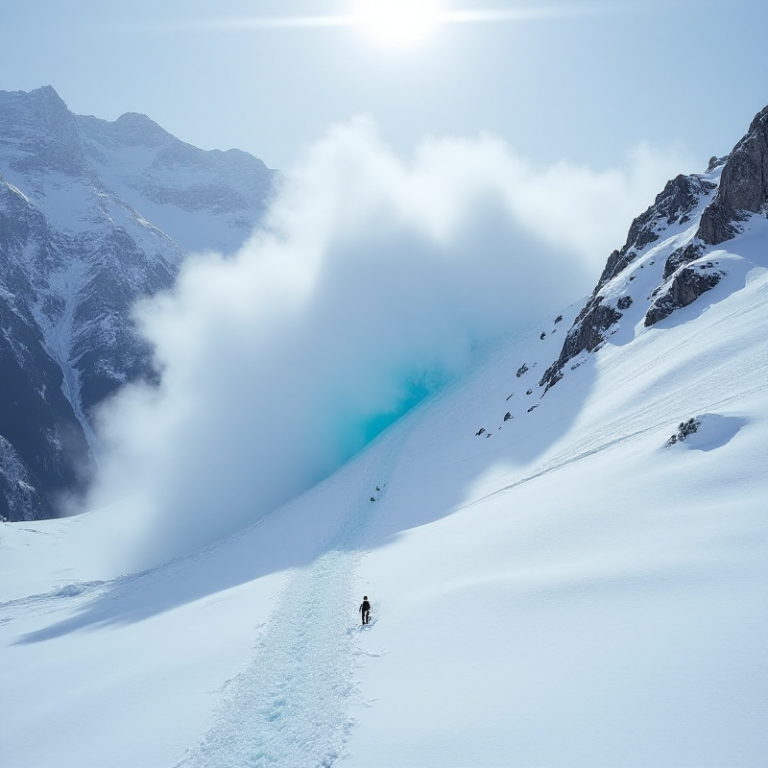When caught in an avalanche, every second counts. Understanding key survival techniques can mean the difference between life and death. In this article, we’ll explore essential tips to survive an avalanche and stay safe in the unpredictable wilderness.
Understanding Avalanche Risk
Avalanches are triggered when a layer of snow collapses and begins sliding down a slope. Factors such as heavy snowfall, wind direction, and temperature fluctuations can make slopes unstable. Before venturing out, it’s crucial to recognize avalanche-prone terrain and conditions.
Recognizing Warning Signs
- Recent heavy snowfall or rain increases instability.
- Cracks in the snow surface or a “whumping” sound underfoot are red flags.
- Visible snow slabs on slopes indicate potential danger.
Equip yourself with tools like an avalanche beacon, probe, and shovel. These are non-negotiable for any backcountry expedition and can dramatically improve your chances of rescue.
Preparation Before You Head Out
Preparation is your first line of defense. Proper planning and gear significantly enhance your survival odds.
Take an Avalanche Safety Course
Learn how to assess snowpack conditions, read terrain, and execute rescue operations. Courses often include hands-on training, which is invaluable.
Check Weather and Avalanche Reports
Consult local avalanche forecasts. Websites and mobile apps can provide real-time updates on risk levels.
Assemble an Emergency Kit
Your survival kit should include:
- Avalanche beacon (transceiver)
- Snow probe and collapsible shovel
- First aid supplies
- Warm clothing and extra layers
- Emergency food and water
What to Do If an Avalanche Strikes
Even with preparation, nature can be unpredictable. Knowing how to react during an avalanche can save your life.
Try to Move to the Side
Avalanches gain speed quickly, but if you spot one, try to escape by moving diagonally to the side of its path.
Ditch Heavy Gear
Drop your backpack and skis if they hinder your movement. A lighter load increases your agility.
Create an Air Pocket
If you’re caught in the snow, use your hands or an object to create space around your face. This pocket can provide breathable air until rescue arrives.
Swim with the Flow
“Swimming” against the snow’s flow helps keep you closer to the surface. Use a backstroke motion to resist being buried deeply.
Surviving Post-Avalanche Burial
Surviving an avalanche burial depends on swift rescue. However, there are steps you can take while trapped.
Stay Calm and Conserve Energy
Panicking wastes oxygen and energy. Focus on slow, deliberate breathing.
Signal Your Location
If your beacon is active, rescuers can locate you faster. If you can move an arm, try tapping or banging on the snow to create sound.
Rescue and Recovery
Timely rescue is critical. On average, buried victims have a 90% chance of survival if rescued within the first 15 minutes. This drops dramatically after that.
Know How to Use Rescue Gear
Practice using a beacon and probe in controlled settings. Time spent fumbling with equipment can be the difference between life and death.
Work as a Team
If traveling in a group, ensure everyone knows their roles in a rescue situation. Swift coordination is essential.
Final Thoughts
To survive an avalanche, preparation, awareness, and swift action are paramount. Always respect the power of nature and never underestimate the risks involved in backcountry adventures. Equip yourself with the right knowledge and tools to maximize your chances of staying alive.
Similar topics: Surviving in Cold Weather: Essential Tips and Skills



